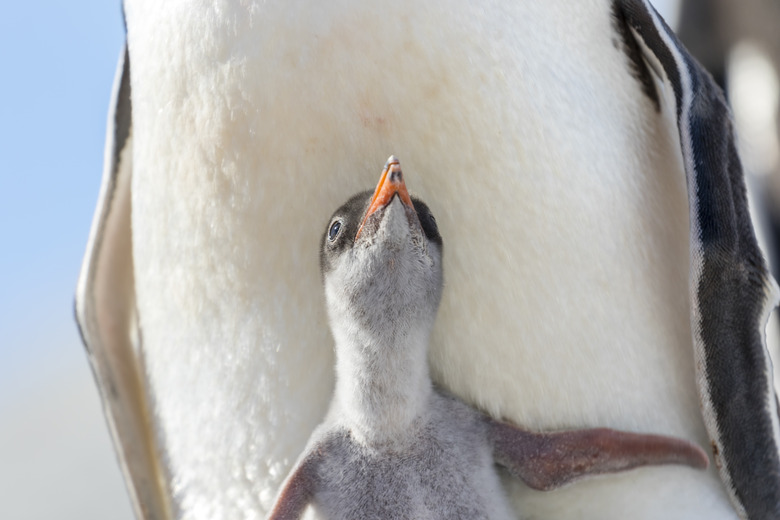Most Of Antarctica's Second-Biggest Penguin Colony Is Completely Gone After An Ice Shelf Collapse
Antarctica's second-largest colony of emperor penguins has been decimated after the collapse of an ice shelf three years ago.
The initial collapse in 2016 drowned thousands of penguins. But it has been the inability of the remaining adult penguins to breed in the years since that has had the biggest effect on the rapidly dwindling population.
British researchers recently released their findings on that lack of breeding, and called it a "catastrophic" blow to an important Antarctic colony. Before the collapse of part of the Brunt Ice Shelf in 2016, the colony at Halley Bay in Antarctica was home to as much as 9% of the global emperor penguin population.
Then, the worst El Niño in more than 60 years took out a chunk of the ice shelf. Sometimes, if the weather is right, shelves can rebuild at least partially. But it has been stormy and windy since the initial collapse and, as researchers put it, the penguins were quite literally left on thin ice. Without a thick ice shelf, the conditions weren't right for the adult penguins left behind to continue to breed.
To Rebuild or Not to Rebuild
To Rebuild or Not to Rebuild
In better conditions, emperor penguins are known for their breeding habits. That's partly because the duos mate with a single partner each year, and some stay together for many years. It's also because (unlike other animals), penguins actually split up child-rearing duties pretty equally. Once the female penguin has hatched the egg, she hands it over to her male partner, and he is in charge of it for the next two months or more. Dad keeps it warm and guards it from predators, while Mom gets to go out to the ocean and hunt for food.
But this is during good times only – now, the penguins at Halley Bay lack the thick ice they need to begin restoring their colony by hatching new penguin chicks.
What Happens Now?
What Happens Now?
Researchers are dismayed about the colony's demise. While it's difficult to judge if it's a direct result of a warming climate, many believe that the extreme El Niño event that led to the ice shelf collapse could have been heightened by climate change.
Plus, climate change models suggest that the coming, warmer years will bring similar events around the world, which doesn't bode well for penguin populations. In fact, some believe that emperor penguin numbers could fall by as much as 70% by the end of the century.
But the researchers still found a hint of good news – a penguin colony near Halley Bay has increased more than tenfold in the past three years. Scientists believe that many Halley Bay penguins found a way to make the 35-mile journey south and start a new life in the Dawson-Lambton colony. It's a great display of resiliency that hopefully many other humans and animals are able to emulate as our planet continues to heat up.
Cite This Article
MLA
Dragani, Rachelle. "Most Of Antarctica's Second-Biggest Penguin Colony Is Completely Gone After An Ice Shelf Collapse" sciencing.com, https://www.sciencing.com/most-of-antarcticas-second-biggest-penguin-colony-is-completely-gone-after-an-ice-shelf-collapse-13718749/. 1 May 2019.
APA
Dragani, Rachelle. (2019, May 1). Most Of Antarctica's Second-Biggest Penguin Colony Is Completely Gone After An Ice Shelf Collapse. sciencing.com. Retrieved from https://www.sciencing.com/most-of-antarcticas-second-biggest-penguin-colony-is-completely-gone-after-an-ice-shelf-collapse-13718749/
Chicago
Dragani, Rachelle. Most Of Antarctica's Second-Biggest Penguin Colony Is Completely Gone After An Ice Shelf Collapse last modified March 24, 2022. https://www.sciencing.com/most-of-antarcticas-second-biggest-penguin-colony-is-completely-gone-after-an-ice-shelf-collapse-13718749/
